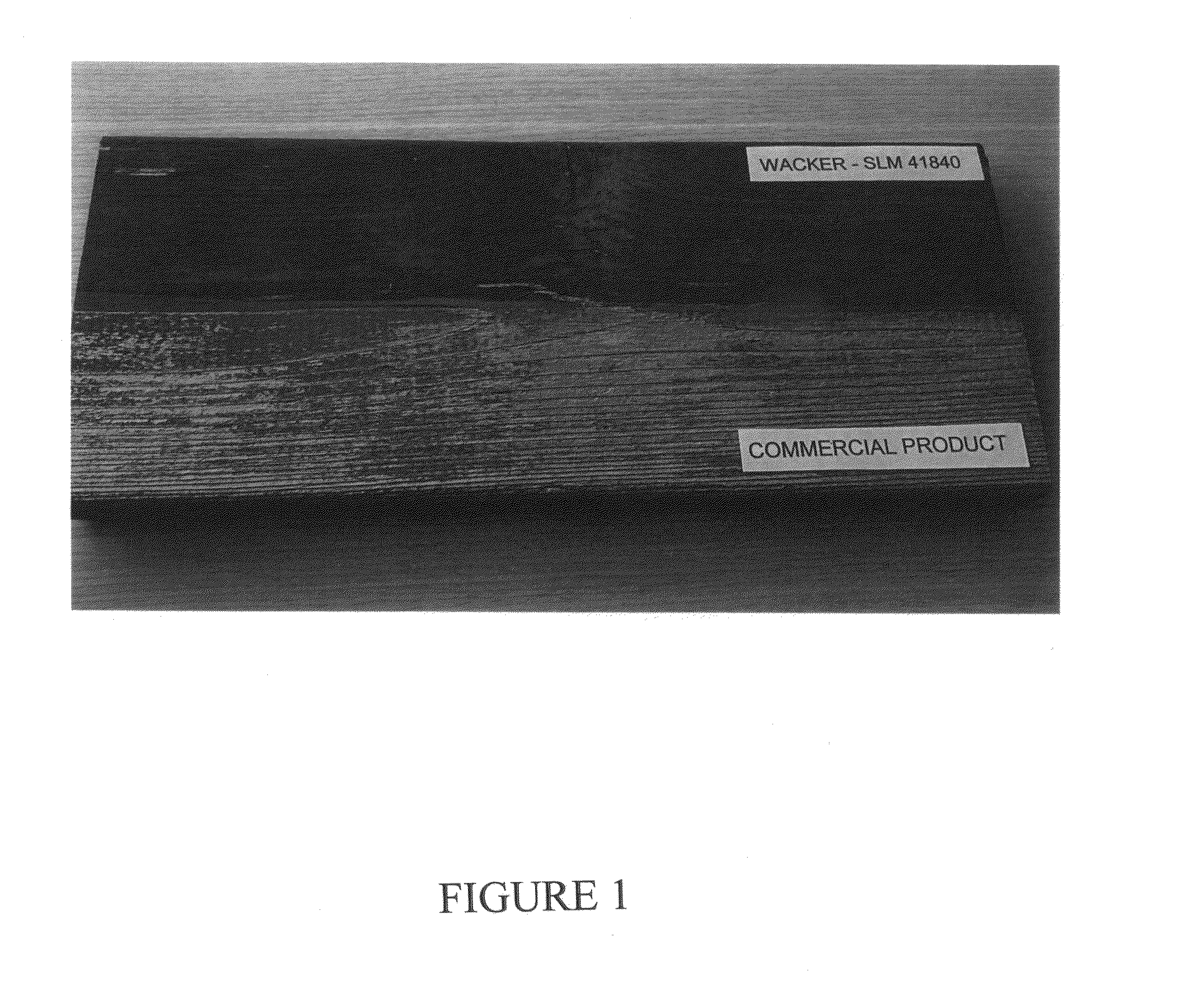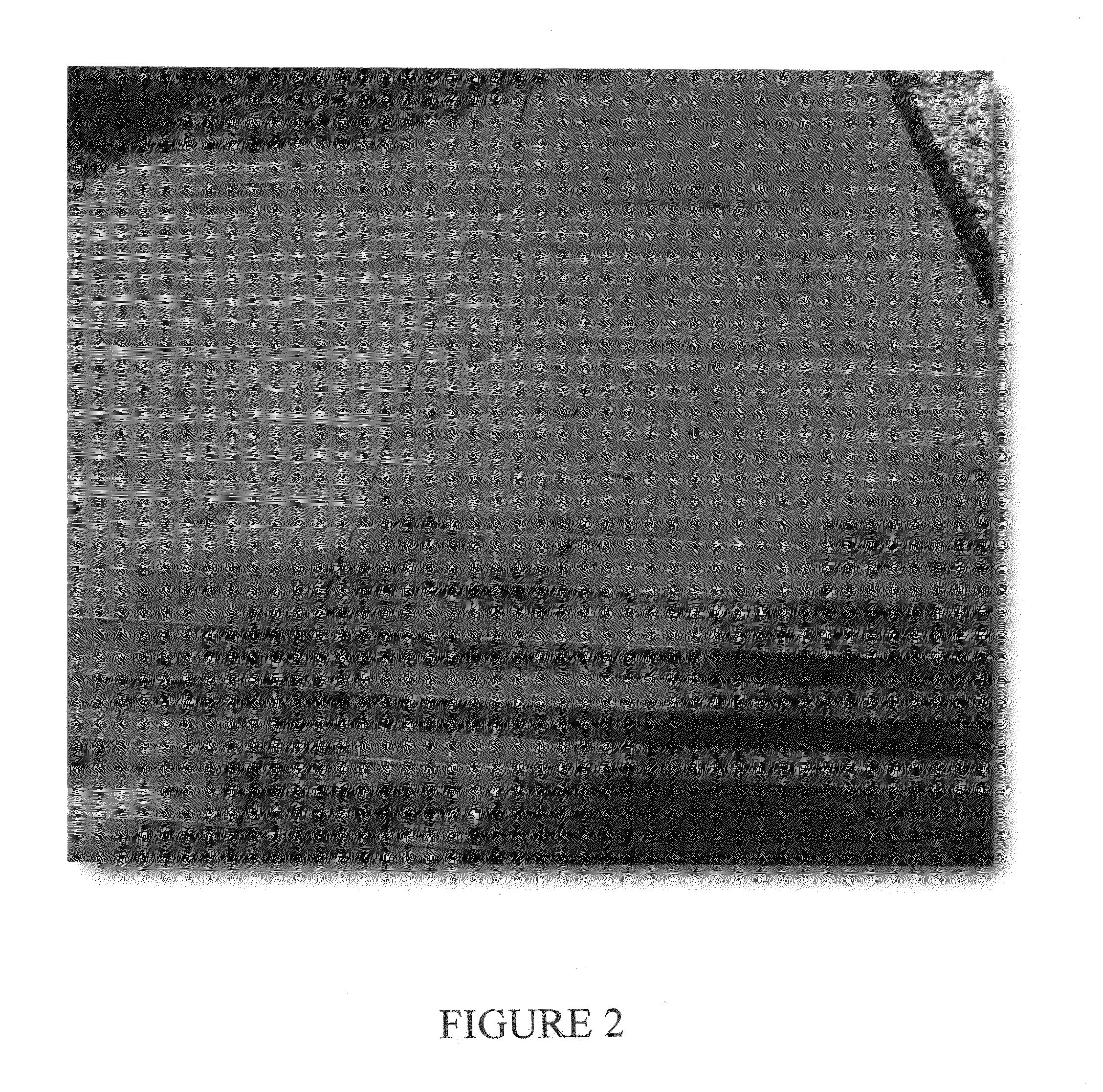Water repellant wood stains with improved weatherability
a water-repellent, wood-based technology, applied in the direction of dyeing process, textiles and papermaking, etc., can solve the problems of high odifference of treatment methods, easy transfer, severe biological and photodegradation of wood, etc., and achieve the effect of maintaining the repellency and high initial water repellency
- Summary
- Abstract
- Description
- Claims
- Application Information
AI Technical Summary
Benefits of technology
Problems solved by technology
Method used
Image
Examples
examples
[0064]The polymer-coated nanoparticle stains of the invention were tested on Southern yellow pine boards for water absorption before and after UV exposure with a Xenon U.V. lamp as is customary for accelerated weathering tests. The stains were also tested on an exposed decking of Southern yellow pine maintained as an outdoor walkway in Adrian, Mich., thus being exposed to hot and cold outdoor conditions as well as pedestrian traffic.
[0065]The stain base used is a published formulation, prepared as follows. In a dispermat mixer, 55.19 parts Avanse ST-410 acrylic resin (37% non-volatiles) available from Dow Chemical was agitated while slowly adding 24.32 parts deionized water at 1000 s−1, together with 0.98 parts Tego™ Foamex 805 defoamer, 0.24 parts Surfynol™ 104 DPM surfactant, 1.51 parts propylene glycol, and Rozone™ 2000 mildewcide. Following 10 minutes of mixing, a premix of 0.57 parts Tinuvin™ 1130 and Tinuvin™ 292, available from Ciba, was added and mixed for two minutes. Next,...
PUM
| Property | Measurement | Unit |
|---|---|---|
| Fraction | aaaaa | aaaaa |
| Fraction | aaaaa | aaaaa |
| Percent by mass | aaaaa | aaaaa |
Abstract
Description
Claims
Application Information
 Login to View More
Login to View More - R&D Engineer
- R&D Manager
- IP Professional
- Industry Leading Data Capabilities
- Powerful AI technology
- Patent DNA Extraction
Browse by: Latest US Patents, China's latest patents, Technical Efficacy Thesaurus, Application Domain, Technology Topic, Popular Technical Reports.
© 2024 PatSnap. All rights reserved.Legal|Privacy policy|Modern Slavery Act Transparency Statement|Sitemap|About US| Contact US: help@patsnap.com









